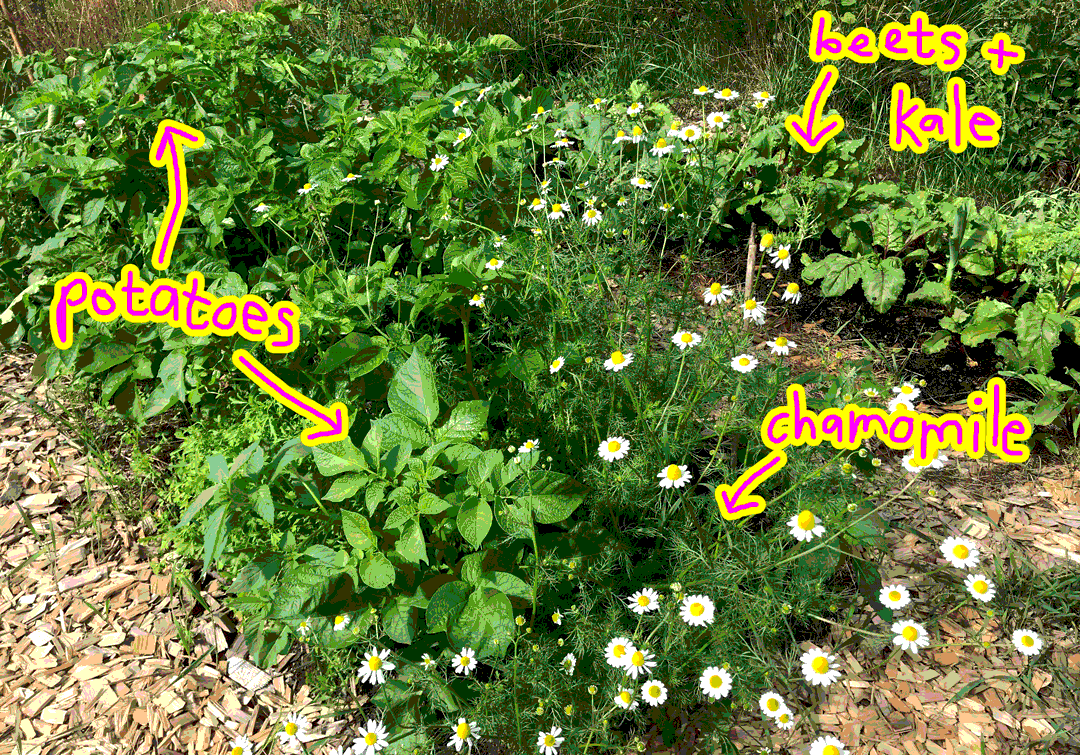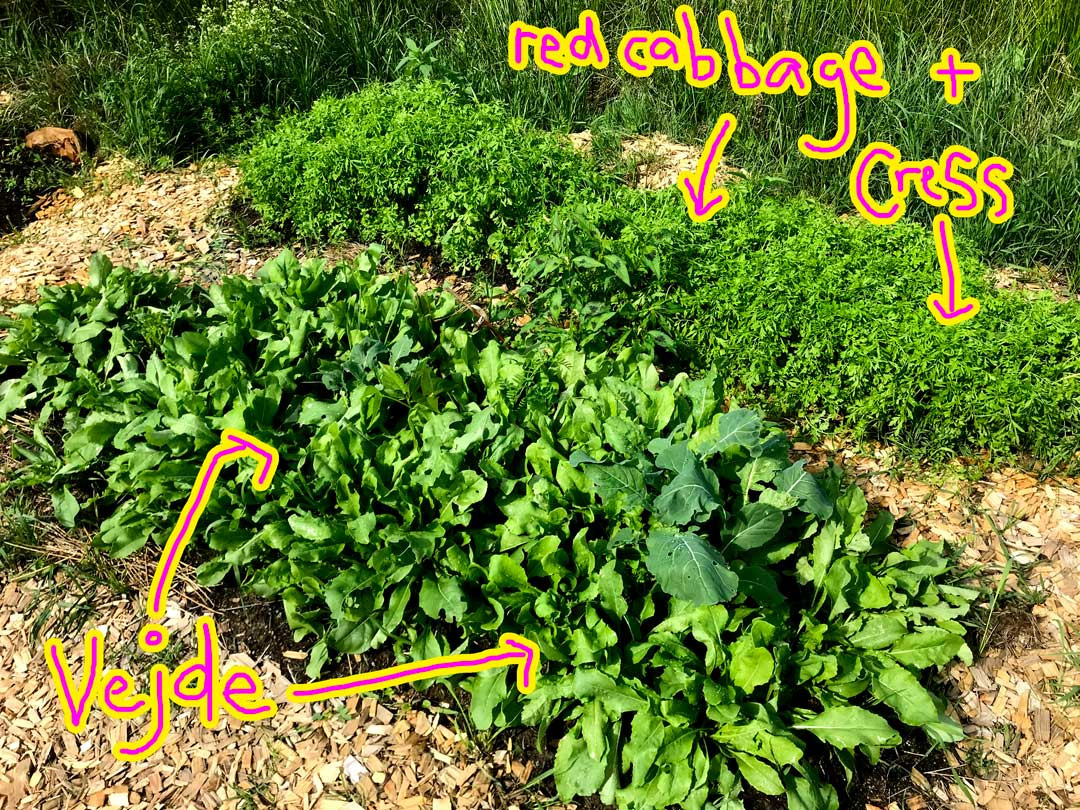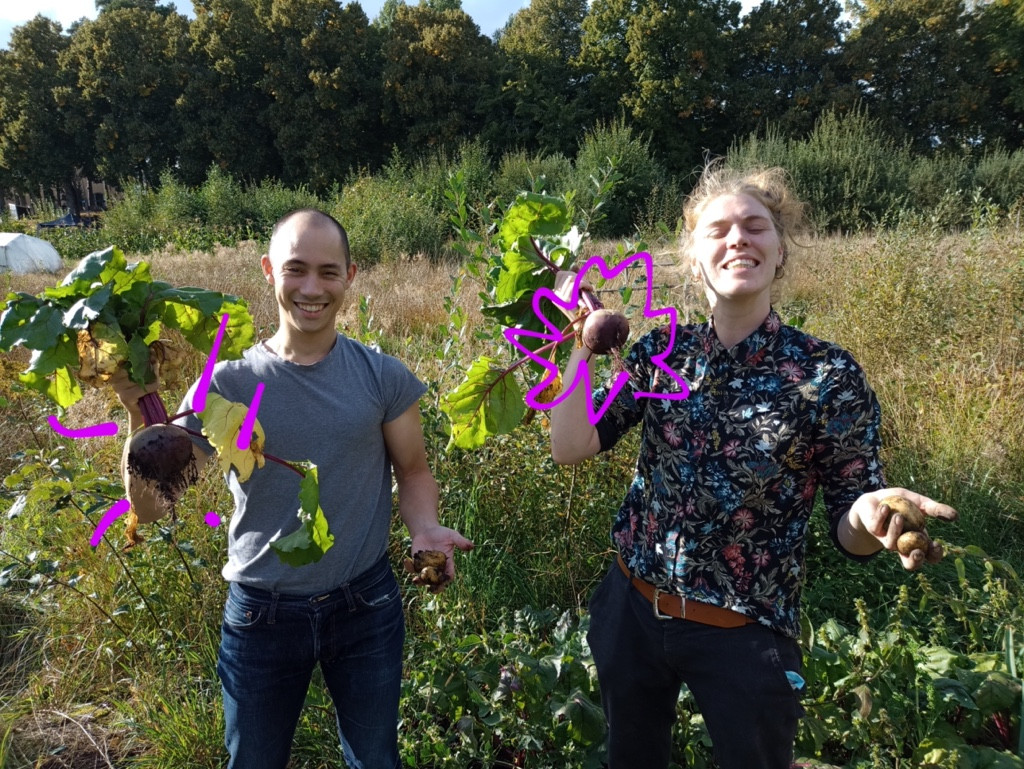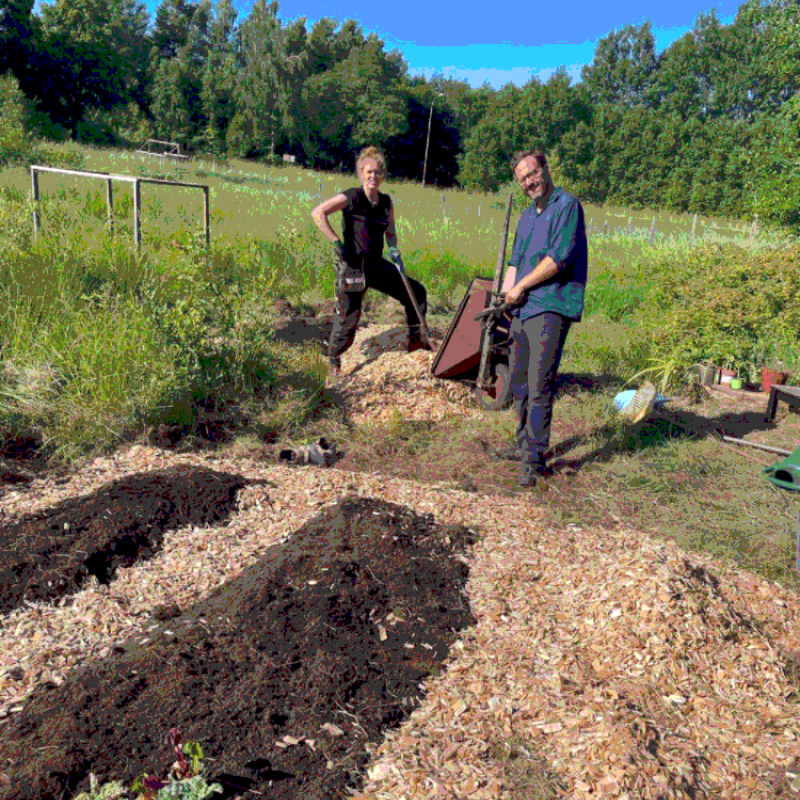POWER PLANTS
🌾🌻✨ Planting for energy 🌾🌻✨
What does it mean to plant for energy? Kristina M. Lyons, in their book Vital Decomposition: Soil Practitioners + Life Politics, shares an anecdote of an amusing, but also layered moment of linguistic misunderstanding during a conversation between campesino farmer Heraldo Vellejo and a regional natural resource management authority:
HERALDO: I see the farms as systems that capture energy. Plantas [plants] are the sensors.
CORPOAMAZONIA TECHNICIAN: Heraldo, how many plantas [generators] do you intend to setup?
HERALDO: No, hombre. I am talking about plantas [plants].
CORPOAMAZONIA TECHNICIAN: Heraldo, plantas [generators] are not cheap!
HERALDO: Hombre, I am talking about arbustos [bushes], matas [shrubs], and plantas [plants]!
CORPOAMAZONIA TECHNICIAN: [silence]
(Lyons 2020, p.169)
On/in our farm plot at VXO Farmlab, we have been experimenting with cultivating the raw materials for our energy experiments, in a regenerative way.
Of course, anything we would plant at the farm would constitute an energy experiment, with plants being super great "solar panels", absorbing light from the visible spectrum with almost 100% efficiency, which, to recap on some high school biology, they convert solar energy into sugars via photosynthesis. And then we turn this plant energy into food to power ourselves, as well as in various mainstream energy generation techniques which are labelled as "green", such as biomass burning, biogas, bioethanol, etc. We are pretty critical about these types of energy, as we believe this biomass and their nutrients should actually go back to the soil.
Ok, but now that we've determined that lots of things are, ultimately, solar-powered, ourselves included, let's stop talking about efficiency, because over here at REC we are more about accessibility, healing and imagination-shifting.
For our various low-energy prototypes that we have been developing, we've been trying to stick as much as possible to principles that we learnt from the farmers on the site, namely Zeenath Hasan from The Dirt and Leah Ireland from The Feminist Farmers. These include putting soil health, biodiversity and the renewal and protection of local ecosystems at the core of our practices. Practices include companion planting, letting things just do their thing, and creating a healthy ecosystem, of course without fertilizers or pesticides. A more logistical principle includes that all external materials brought onto the site should be sourced from a radius of 6km of the farm. Besides being a comfortable biking distance, this keeps things local and doesn't contribute to toxic global supply chain systems which thrive on exploitation of land and people, and allows us to keep track of mapping where things come from.
We also find it important to see and tangibly feel how much effort (our own labour, the land's energy/space, water..) goes into producing these raw materials. There are also many debates about whether land should be used for agriculture or energy. We say, how about both, with zero compromising on regenerating land.
When we moved in/on, we had to spend a lot of time clearing the biodiversity-throttling grass from the space, which we then used as hay to surround our beds and prevent further grass growth (this only works if you cut the grass before it goes to seed!). We also put down some wood chips to help with this, and for water retention. To help with pushing back against this grass (which, along with many other weeds, often pops up in ruderal spaces / third landscapes, where humans have flattened the pre-existing ecosystem, as in the case with the farm site before it became a farm). We also gave some "cultural heritage" meadow seeds a head start indoors before the last frost, under some very efficient LED grow lights.
Below are some maps of our farm beds, and descriptions of what and why we planted what we did. At the end I'll list the things we want to grow this year.

Potatoes for DIY agar, for fungi cultivation on petri dishes. We are cultivating fungus as a source of materials, food [including myco-proteins], for their use in bioreactors and soilremediation.
We drink a lot of tea in the lab! So we planted Chamomile for calming soft space tea, also because we know that energy preservation is an important part of energy processes. Chamomile can also apparently be used for soap/cleaning potions.
Woad/vejde "European Indigo" for blue dye, which we plan to create our own Dye Sensitized solar cells with, as well as for ink, textile dyeing, etc.
Kale as companion plant, to distract the invasive slugs, and for hydrophillic 'living' materials research.

Beets and Red Cabbage for dye, to be used also for Dye sensitized solar cells, but also for making pH sensors.
Meadow plants - re-meadowfication, to push back against the troublesome grass, and to make it easier for our pollinator friends to find food, who are providing their energy for essential ecosystem services.
Sunflowers - pollinators, leeching chemicals in soil which can push back against grass, DIY bio-oil, shade structures
Fragrant Geranium - phytoremediation from highway's chemical leeching, soft space calming, mosquito deterrent
Calabash - electronics housing, other containers.
Spekboom (porticulara afra) for carbon capture from highway
Some random greens for beds we had prepared as a cover crop, which will make the space nice for the next season.
And then for the next season we have planned to add the following to the beds:
onion, because they are delicious and their skins are apparently piezo-electric! So we can try make some piezoelectric nanogenerators from them.
wheat, for making wheat gluten (seitan) bioelectrodes for our fuel cells, and, along with other grains, for fungus cultivation.

Leave a comment if you can think of any other Power Plants!



Leave a comment